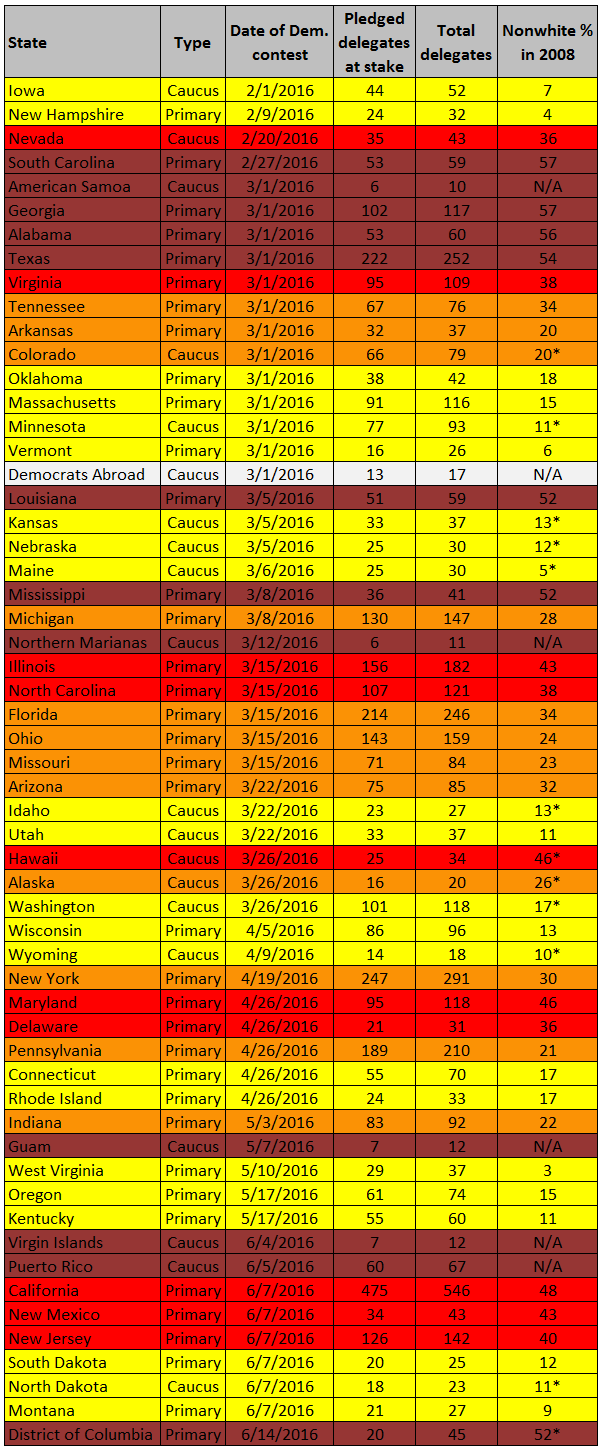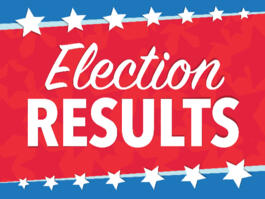The Democrats: Bernie’s Blowout
A Commentary By Larry J. Sabato, Kyle Kondik and Geoffrey Skelley
Will it help him make inroads with nonwhite voters?
That Bernie Sanders won New Hampshire was not a surprise. That he won by so much is. It’s a tremendous shot in the arm for his campaign and a jarring setback for Hillary Clinton.
Keep this in mind: While we and many others have been suggesting for months that Clinton could lose New Hampshire and Iowa (which she very barely won), most of the rest of the country does not follow politics nearly as closely as we do. To these voters, the idea of Clinton losing to Sanders by over 20 points is going to seem shocking. It could lead to some perilous times for the Clinton campaign, which already was rocked by reports of infighting and rumors of potential staff changes even before New Hampshire voted. There may be many Barack Obama campaign veterans working for Clinton, but one thing she couldn’t import from the campaign that beat her eight years ago was its “No Drama Obama” mantra.
The calendar has not done Clinton any favors: Iowa and New Hampshire were arguably two of Clinton’s three-worst states: They are both very liberal and very white (Clinton’s other worst state is Vermont, which votes on March 1 and should give Sanders a commanding statewide win).
One of Clinton’s best states should be South Carolina, which votes on Feb. 27 and has a Democratic electorate that should be more than half African American. Clinton’s numbers remain very strong among black voters. However, before South Carolina, there is Nevada, on Feb. 20. Nevada should be better for Clinton than Iowa and New Hampshire. She won it in 2008 and its electorate should be at least a third nonwhite. However, it is also a caucus, which might help Sanders’ fired-up supporters. If Clinton can’t turn her campaign around starting in Nevada, and Sanders begins to make inroads in various minority communities, the next few months are going to be a nightmare for Team Clinton. And this is wholly apart from the withering media questions that will come from every ideological direction.
Still, take a look at Table 1, an updated version of a table we ran several months ago laying out the Democratic primary calendar. Many of the upcoming states are very diverse. Hypothetically, these states should be quite favorable to Clinton.
Table 1: Nonwhite voters in Democratic presidential contests
Sources: Primary and caucus dates chiefly from Frontloading HQ and TheGreenPapers.com. Delegate totals based on draft state party plans where possible, TheGreenPapers.com for additional data.
Notes: *Estimate of nonwhite participation. Though data are lacking to provide estimates, all territorial primaries and caucuses undoubtedly had majority nonwhite participation in 2008 (and will again in 2016). Utah Democrats used a primary in 2008 but will use a caucus in 2016. Texas Democrats used the “Texas Two-Step” primary and caucus/convention method in 2008 but will use just a primary in 2016. We could not make an estimate for Democrats Abroad.
It is fair to wonder about Clinton’s ability to put the party back together if she does become the nominee. Getting youth turnout is always tricky for Democrats, and Clinton is getting absolutely annihilated with young voters: She lost the youngest group of voters (17-29 in Iowa and 18-29 in New Hampshire) 84%-14% and 83%-16%, respectively. Now, we know that Barack Obama put the party back together fairly easily in 2008, and that if Clinton is the nominee she will be able to use her Republican opponent as a motivational tool. But these are staggeringly lousy numbers for Clinton nonetheless.
In terms of actually winning the nomination, it’s always worth remembering an important detail about the Democratic contest: About 15% of the total delegates are so-called superdelegates, who are elected officials and party leaders. According to the New York Times, Clinton leads Sanders 362 to eight among these delegates.
Their votes count just the same as the delegates won in primary and caucuses. Now, granted, they could defect from Clinton — they are true free agents. But if she keeps them on her side, Sanders will need many more New Hampshire-style blowouts to catch up to Clinton in the delegate fight, given the proportional allocation rules on the Democratic side.
We said last week that Clinton’s biggest problem right now is the FBI, which confirmed this week that it is looking into Clinton’s use of a private email server while serving as secretary of state. We continue to believe that. Though she is still likely to be the Democratic nominee, these are perilous times for Clinton, even if the rocky waters her campaign finds itself in were foreseeable far in advance.
Larry J. Sabato is the director of the Center for Politics at the University of Virginia.
Kyle Kondik is a Political Analyst at the Center for Politics at the University of Virginia.
Geoffrey Skelley is the Associate Editor at the Center for Politics at the University of Virginia.
See Other Political Commentary by Larry Sabato
See Other Political Commentary by Kyle Kondik
See Other Political Commentary by Geoffrey Skelley
See Other Political Commentary
Rasmussen Reports is a media company specializing in the collection, publication and distribution of public opinion information.
We conduct public opinion polls on a variety of topics to inform our audience on events in the news and other topics of interest. To ensure editorial control and independence, we pay for the polls ourselves and generate revenue through the sale of subscriptions, sponsorships, and advertising. Nightly polling on politics, business and lifestyle topics provides the content to update the Rasmussen Reports web site many times each day. If it's in the news, it's in our polls. Additionally, the data drives a daily update newsletter and various media outlets across the country.
Some information, including the Rasmussen Reports daily Presidential Tracking Poll and commentaries are available for free to the general public. Subscriptions are available for $4.95 a month or 34.95 a year that provide subscribers with exclusive access to more than 20 stories per week on upcoming elections, consumer confidence, and issues that affect us all. For those who are really into the numbers, Platinum Members can review demographic crosstabs and a full history of our data.
To learn more about our methodology, click here.




